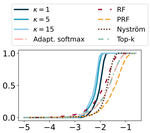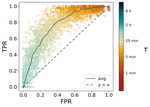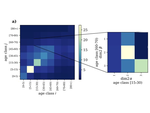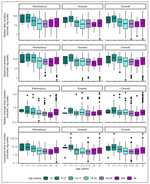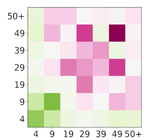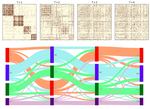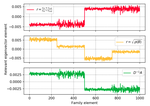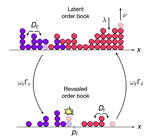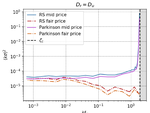Modeling memory in time-respecting paths on temporal networks
In this article we show that time respecting random walks on empirical proximity networks have memory. we further analyze how memory impact the diffusion speed over the temporal network.
The relative contribution of close-proximity contacts, shared classroom exposure and indoor air quality to respiratory virus transmission in schools
In this article we measure the relative imapct of close-range proximity with respect to co-location in the spreading of respiratory viral infections
Learning distributed representations with efficient SoftMax normalization
In this article we introduce a fast approximation method for the attention-score normalization constants and use this result to define an efficient algorithm to create distributed representations.
Comparing temporal and aggregated network descriptions of fluid transport in the Mediterranean Sea
We investigate marine currents from a temporal network perspective and show that time needs to be accounted for for accurated modeling.
Resilience of mobility network to dynamic population response across COVID-19 interventions: Evidences from Chile
We explore the variations of mobility across the Covid-19 waves in Chile and correlate it with several demographic indicators.
Association Between Oral Microbiota and Close-Range Proximity in a Primary School
In this work, we study the association between close-range proximity and oral microbiota in among children attending primary school.
An embedding-based distance for temporal graphs
In this article we propose a definition of distance between temporal graphs.
Generalized contact matrices allow integrating socioeconomic variables into epidemic models
In this article we explore the impact that higher resolution, generalized contact matrices have on epidemic modeling.
Political context of the European vaccine debate on Twitter
We examine the relationship between the political interest of social media users and their exposure to vaccine-hesitant content on Twitter, focusing on 17 European countries using a multilingual, longitudinal dataset of tweets spanning the period before COVID, up to the vaccine roll-out.
Association of close-range contact patterns with SARS-CoV-2: a household transmission study
We studied the association between of close-range contact patterns with SARS-CoV-2 transmission. We deployed proximity sensors for two weeks to measure face-to-face interactions between household members after SARS-CoV-2 was identified in the household, in South Africa, 2020–2021.
Estimating household contact matrices structure from easily collectable metadata
In this article we show how to reliably estimate contact matrices from easiliy collectable metadata. We exploit high resolution proximity measurements conducted in a rural and an urban village in South Africa.
Spectral methods for graph clustering
This manuscript presents the works conducted during my PhD.
Nishimori meets Bethe: a spectral method for node classification in sparse weighted graphs
In this article we show a relation between the Bethe approximation for Ising model on random graphs and the Nishimori temperature with applications to unsupervised correlation clustering.
Community detection in sparse time-evolving graphs with a dynamical Bethe-Hessian
In this article we propose an new spectral algorithm to perform spectral clustering in sparse, dynamical graphs.
Optimal Laplacian regularization for sparse spectral community detection
In this article we provide a new interpretation on why regularization helps in sparse community detection as well as providing results on the optimal regularization to be adopted.
A unified framework for spectral clustering in sparse graphs
In this article we show how the benchmark spectral clustering techniques can all be explained under the same, elegant framework. We further provide a highly performing algorithm for community detection.
Revisiting the Bethe-Hessian: Improved Community Detection in Sparse Heterogeneous Graphs
In this article we propose an improved regularization of the Bethe-Hessian matrix to perform spectral clustering in sparse graphs.
Community detection in sparse realistic graphs: improving the Bethe-Hessian
This article proposes the study of the Bethe-Hessian matrix for community reconstruction applied on networks with arbitrary degree distribution.
How does latent liquidity get revealed in the limit order book?
In this article we discuss and compare to real data a theoretical model describing the densities profile of actions in the limit order book
A mechanism for the latent liquidity revealing into the limit order book
In this manuscript we propose a mean field microscopic model to describe the density of the orders placed in the limit order book.


